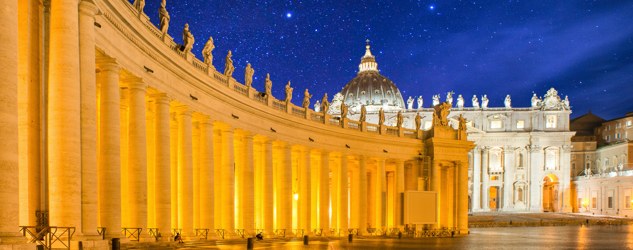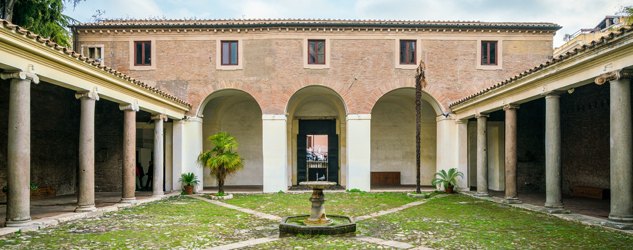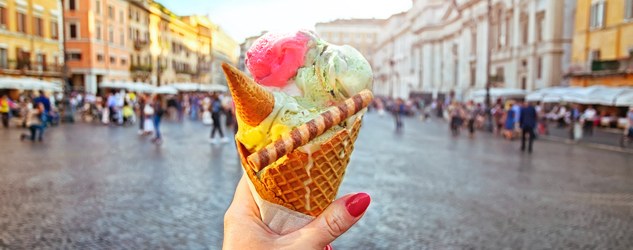If you’re planning a trip to Rome anytime soon, check out these fascinating facts to help you get the most out of the Eternal City.
There are as many Romes as there are visitors to the city, churches to see and movies and books depicting it… That’s why it’s known as the ‘Eternal City’. However, Rome is also a city full of secrets and fascinating facts. Read on for a few that are sure to come in handy on your next trip to Rome. Finding cheap flights to Rome is easy at any time of year.
One city, three states

Rome is so special that it’s the only city in the world to house another state within it. The Vatican City is the seat of Catholicism and, as such, exists as a separate and autonomous state ruled by the Pope. To travel between the two states, just cross the border formed by the vast Piazza San Pietro. However, there is a point where the cross-border issue becomes more complex and you can actually see three different states at once. Here’s how: through the keyhole of the Order of the Knights of Malta, you can see both the dome of the Vatican City and the gardens of the Order’s Magistral Villa, while your feet are planted on the Aventine Hill that belongs to Rome.
Go plastic-free this trip
Rome has some 2000-plus fountains, so you’re never far away from one anywhere in the city. And since the water is always cold and tastes great, why buy bottled? You can save the planet a lot of plastic—which it’s not short on already—by carrying your own flask and filling up as you go, which is going to be pretty often in August. To drink directly from the fountain there’s a trick to not getting soaked: if you cover the pipe from which water flows continuously it will spurt out of the hole on top instead.
Going underground

Every guide to Rome focuses on what’s on the surface, which is certainly plenty to be going on with. But there’s another, hidden Rome that’s just as fascinating: a veritable labyrinth of galleries, temples and underground catacombs. The best-known are the catacombs of Domitilla, San Callisto and San Sebastiano, but there are thought to be over 2 million m2 hidden deep down, as well as 6 million tombs, almost a second city. Another unmissable subterranean monument is the Basilica di San Clemente, a triumph of antiquity dating to the 2nd century BCE that literally went down in history.
Who’s hungry?
Another interesting fact about Rome, or rather its inhabitants, is that Romans don’t spend the entire time eating pizza and ice cream. In fact, there are a bunch of great restaurants and Roman cuisine is pure gourmet. If you’re after something a bit more down to earth, however, you have to try the fried cod fillet. It’s on the menu in any number of eateries, but Dar Filettaro, on Largo dei Librari 88, does the best one, making it according to the same recipe for decades. The fillets are coated in an egg batter, fried and served hot with a glass of dei Castelli white wine. It’s said even Pope Pius XII was a big fan. In the absence of home delivery, he used to send his secretary out for it.
An ice cream parlour blessed by the gods (well, almost)

And for dessert (or any other time), Giolitti ice creams are divine, and not just because of their taste, texture and creaminess. This artisan ice cream shop, with its vintage sign out front, is said to be the oldest in Rome. It’s so good that Karol Wojtyla, aka Pope John Paul II, used to be a regular customer. The pope loved these ice creams and his favourite flavour was the legendary candied chestnut made right here in this historic ice cream shop. According to the makers, the Vatican would be in touch to order more ice cream every few days. Try it and there’s sure to be white smoke.
The world’s most glamorous drain cover
Rome is full of places that have served as the backdrop to classic films. Perhaps the most famous is Roman Holiday which saw the glamorous Audrey Hepburn exploring the city, and stills from the film are among the most popular postcards sold in the souvenir kiosks. One scene takes place at the Bocca della Verità, or ‘the Mouth of Truth’, in the Basilica di Santa Maria in Cosmedin. Legend holds that anyone who places their hand in the stone mouth may make a wish. However, if the stone detects they are a compulsive liar then it will bite off the hand instead. The Boca’s origins are unknown, but many believe it actually had a more prosaic function as a drain cover for the Cloaca Máxima sewerage system. And, yes, we realise visiting a drain is probably one of the weirdest things you can do in Rome.
Free art wherever you look
Rome is full of art, but it doesn’t have to cost an arm and a leg to appreciate it. Some of the museums are free the first Sunday of the month, such as the Palazzo Barberini, the Galleria Borghese, the Castel Sant'Angelo and the Palazzo Massimo, to name just a few. The Vatican Museum is also free the last Sunday of every month. Mind you, imagine the queues on those days…
And that’s not all: in the Basilica di San Pietro in Vincoli, you can see Michelangelo’s wonderful Moses without paying a cent, and, interestingly, the place isn’t overrun with visitors. It’s the same for some of Caravaggio’s great works which can be seen in churches open to the public. For example, the Basilica of Santa Maria del Popolo houses the Conversion of St Paul and the Crucifixion of St Peter, as well as the statue of Habakkuk and the Angel by Bernini. The church of San Luigi dei Francesi is home to The Martyrdom of St Matthew, The Calling of St Matthew and The Inspiration of St Matthew, while the Basilica di Sant'Agostino in Campo Marzio houses the Madonna of Loretto.
Give us this day our daily treasure
Want to know another fascinating fact about Rome? Just take a walk to its most famous fountain, the Trevi Fountain, whose waters ‘collect’ hundreds of Euros every day: an estimated 1.5 million Euros in 2018, or, to put it another way, an average of 4000€ per day. If you’ve ever wondered where it all goes, until recently—thanks to Walter Veltroni, mayor of the Italian capital in 2001—it was donated to the charity Caritas, accounting for 15% of their total collections in Rome. Things changed, however, when Virginia Raggi of the 5 Star Movement took over. She decreed the city council would manage the money, dedicating it to social causes and upkeep of cultural heritage.







